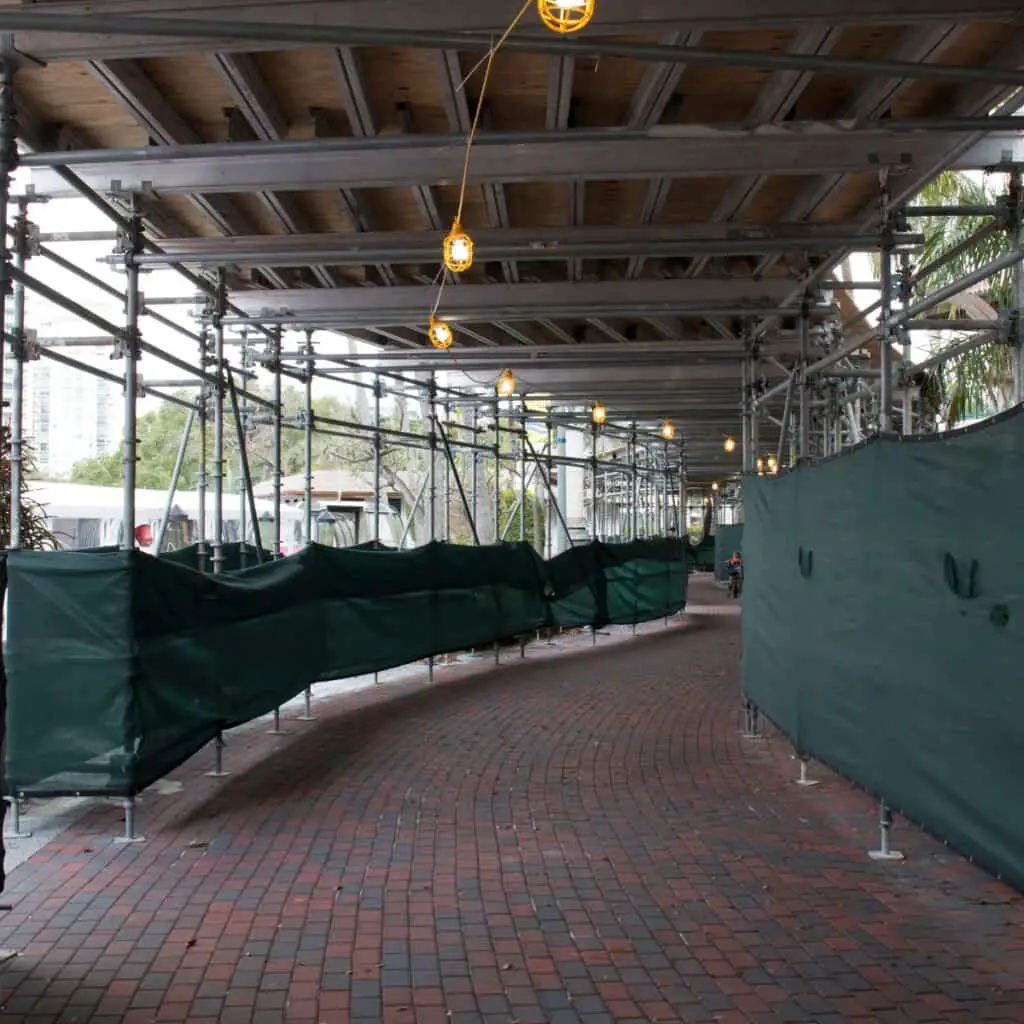Construction projects can be messy, which is why it’s important to protect furniture from all the dirt and debris.
Covering is the term used to describe the act of protecting building elements and furniture from damage. It involves shielding them from dust and debris that can accumulate during construction.
In this article, I’ll explain the importance of covering in construction and why it’s crucial to safeguard furniture from construction debris.

In this post we'll cover:
Why Protecting Your Furniture During Construction is a No-Brainer
If you’re undergoing a construction project, you’re probably aware of the dust, debris, and potential damage that can occur. But have you considered the impact it can have on your furniture? Protecting your furniture during construction is crucial to ensure that it remains in good condition.
Plastic is Your Friend
One option for protecting your furniture is to cover it with plastic. This will prevent any dust or debris from settling on the surface and causing damage. Additionally, plastic coverings are affordable and easy to find at any hardware store.
Covered Furniture, Happy Homeowner
Covering your furniture during construction not only protects it from dust and debris, but it also gives you peace of mind. You won’t have to worry about any potential damage or issues that may arise during the construction process.
Additionally Protected
If you want to take extra precautions, you can use tape to seal the plastic covering around your furniture. This will ensure that no dust or debris can get in and damage your furniture.
Issues to Avoid
Not protecting your furniture during construction can lead to a variety of issues, including:
- Scratches and dents on the surface
- Stains from dust and debris settling on the furniture
- Damage from tools or equipment accidentally hitting the furniture
By taking the time to cover and protect your furniture during construction, you can avoid these issues and keep your furniture looking like new.
What are the Different Types of Coverings Used in Construction?
Covering a building during construction means protecting it from the elements and potential damage. This section will explore the various types of coverings used in construction and their benefits.
Nylon Mesh
Nylon mesh is a popular choice for covering buildings during construction. It is a tough and durable material that can withstand the effects of wind and water. Nylon mesh is also suitable for covering large areas and is easy to install. Its benefits include:
- Greater airflow, which helps to keep the building dry and prevents the buildup of moisture.
- The mesh is lightweight, making it easy to handle and set up.
- It is a cost-effective method of covering buildings during construction.
Plastic Sheeting
Plastic sheeting is another popular form of covering used in construction. It is a simple and effective way to protect a building from the elements. Plastic sheeting is available in a range of sizes and can be used to cover both horizontal and vertical surfaces. Its benefits include:
- It is a hard-wearing material that can withstand the effects of wind, rain, and dirt.
- Plastic sheeting is a cost-effective way to protect a building during construction.
- It is easy to install and can be fixed in place using a range of products.
Canvas
Canvas has been used as a covering for buildings for centuries. It is a natural material that is tough and durable. Canvas is suitable for covering both interior and exterior surfaces and can be used to create decorative mosaics. Its benefits include:
- Canvas is a natural material that is environmentally friendly.
- It is a hard-wearing material that can withstand the effects of wind, rain, and dirt.
- Canvas can be used to create decorative finishes that add a personal touch to a building.
Upholstery Fibres
Upholstery fibres are a modern form of covering used in construction. They are designed to contain and limit the spread of fire and are often used in buildings that contain gas, fuel, or milk. Upholstery fibres are also used to cover shower and washing appliances and baths. Their benefits include:
- Upholstery fibres are a tough and durable material that can withstand the effects of fire and water.
- They are easy to install and can be fixed in place using a range of products.
- Upholstery fibres are a cost-effective way to protect a building during construction.
What is the Cut and Cover Method in Construction?
The cut and cover method is a traditional form of construction that involves digging a trench in the ground, building a structure inside it, and then covering it back up with earth. This technique is applied to construct tunnels, storage areas, water tanks, and other components that require a flat profile. The method is known for its economical approach, making it preferred for shallow depths and urban areas.
How is the Cut and Cover Method Applied?
The cut and cover method requires excavation of a trench in the ground, which is subsequently covered with backfill after installation of all components for tunnel structures. The excavation can be performed from the surface, making it an environmentally friendly approach. The method involves building a box-like structure with walls and a roof, tied together structurally to support the outside conditions. The roof is then restored to its original condition, and the surface is covered with backfill.
Conclusion
Covering in construction can mean many things, but it’s always done to protect something from damage.
It’s important to protect furniture from construction dust and debris with a plastic covering, and you can do the same with your building construction.
So, don’t be afraid to cover it up!
I'm Joost Nusselder, the founder of Tools Doctor, content marketer, and dad. I love trying out new equipment, and together with my team I've been creating in-depth blog articles since 2016 to help loyal readers with tools & crafting tips.
